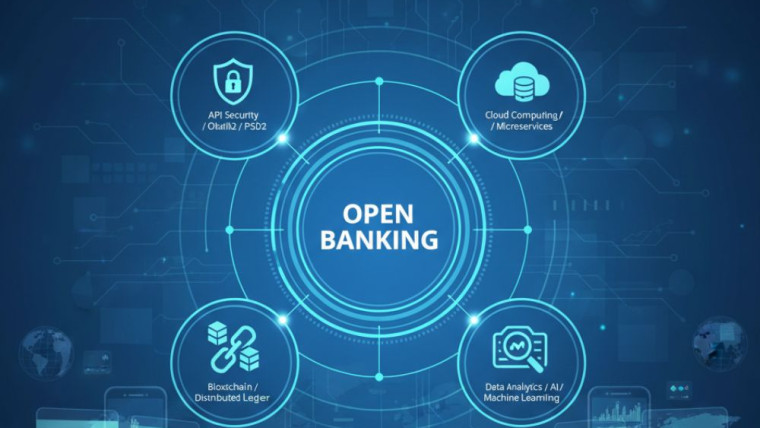Digital financial innovation means that the relationship between individuals, businesses and the government with their money and of financial services itself also is being transformed. New technologies offer unprecedented chance to perfect financial products, methods and underpinning mechanisms. Moving from mobile payments to crypto coins, digital financial innovation has made today’s system not only faster but also more convenient and secure. Its has become an economic engine for all mankind — no matter where they are located nationally or regionally domestically.
What Does Digital Financial Innovation Mean?
Digital financial innovation is in essence the application of digital technology to improve financial services. It is divided into a number of areas, such as payment innovation, financial integration, new types of financial products and so on. These innovations affect many dimensions of the financial ecosystem, including payments, lending, investing and insurance.’ They have never been limited to big technology companies or financial institutions. In fact, they take in start-ups Governments and NGOs.
Digital financial innovation focuses on three main objectives:
- Improving Efficiency – Simplifying processes to save time and reduce costs.
- Enhancing Accessibility – Making financial services available to underserved populations, particularly in developing regions.
- Boosting Security – Developing systems that protect sensitive financial information while enabling seamless transactions.
The Role of Technology
Technological advancements such as artificial intelligence (AI), blockchain, cloud computing, and big data analytics are driving digital financial innovation. These technologies have disrupted traditional financial systems, offering new ways to manage and interact with money.
For instance:
- AI enables better credit risk analysis, personalized financial advice, and anti-fraud solutions.
- Blockchain ensures transparency and security in peer-to-peer financial transactions.
- Big Data Analytics helps predict market trends and consumer behavior.
- Cloud Computing improves scalability and reduces infrastructure costs for financial institutions.

Key Components of Digital Financial Innovation
Digital financial innovation spans numerous areas, but the following sectors have seen the most notable transformations:
1. Mobile Payments and Digital Wallets
The rise of mobile payment platforms like PayPal, Venmo, and Apple Pay has revolutionized how people make transactions. Digital wallets allow users to store their payment information securely and pay quickly using their smartphones.
Mobile payment systems are especially impactful in regions with limited banking infrastructure. For example, platforms like M-Pesa in Kenya have provided financial access to millions who lack traditional bank accounts. According to a World Bank report, mobile money systems have contributed significantly to reducing poverty levels in Africa.
2. Cryptocurrency and Blockchain
Cryptocurrency, led by Bitcoin and Ethereum, is arguably one of the most disruptive forms of digital financial innovation. Built on blockchain technology, cryptocurrencies offer decentralized, secure, and transparent transactions without the need for intermediaries.
Blockchain technology has extended beyond cryptocurrency and is now being integrated into mainstream financial services like supply chain financing and smart contracts. For instance, JPMorgan Chase uses its own blockchain network, Link, to streamline cross-border transactions.
3. Robo-Advisors and Automated Investments
The introduction of robo-advisors has democratized investment management. Platforms like Betterment and Wealth front provide automated, algorithm-driven financial planning services, making it easier for people from all income levels to invest and grow their wealth.
Robo-advisors use AI and machine learning to manage portfolios, optimize tax strategies, and suggest tailored investment opportunities based on the user’s risk tolerance and financial goals.
4. Peer-to-Peer Lending
P2P loan platforms link borrowers and individual investors without going through banks at all. By doing so, companies like Lending Club and Prosper offers both lower rates of interest to those who borrow from them as well as higher yields for those who lend their money in this way.
This model does not only increase loan access for the little guys and transparency into their borrowing processes; it’s also bringing about a new opportunity for consumers who, once confined by traditional financial institutions, find it takes them no more than 30 minutes to sign up.
5. Insurtech
Insurtech, or insurance technology, leverages innovation to improve insurance policies, claims handling, and customer service. Companies like Lemonade use AI to expedite claims processes, while others analyze data to offer personalized insurance products.
6. Financial Inclusion
One of the most significant impacts of digital financial innovation is its role in promoting financial inclusion. More than 1.4 billion adults globally still lack a bank account. With mobile money services and digital lending platforms, financial tools are becoming accessible to even the most underserved populations.
For example:
- Digital credit models like Branch and Tala offer instant loans.
- Microinsurance products protect small farmers in developing countries against climate risks.
The Benefits of Digital Financial Innovation

- Convenience:
Digital platforms enable 24/7 access to financial services, removing barriers related to time and location.
- Cost Savings:
Automation reduces administrative costs and inefficiencies, lowering costs for consumers.
- Faster Transactions:
Transactions that would traditionally take days, such as cross-border payments, are now completed within minutes.
- Transparency:
Blockchain and similar technologies ensure that all parties have a clear view of transactions, reducing fraud and increasing trust.
- Customization:
AI-driven personalization enhances customer experiences by tailoring financial products to individual needs.
Challenges of Digital Financial Innovation
While digital financial innovation presents numerous benefits, it is not without challenges:
- Cybersecurity Concerns:
The more digital financial platforms grow, the more appealing they become to cybercriminals. Strong cybersecurity measures are essential.
- Regulatory Hurdles:
Governments and regulators are struggling to keep up with the pace of innovation, resulting in legal uncertainties.
- Data Privacy:
The collection and use of big data in financial services raise concerns about user privacy and data misuse.
- Digital Divide:
While digital finance broadens accessibility, many people in rural and low-income areas lack internet or smartphones necessary to take advantage of these services.
How Businesses Can Adapt to Digital Financial Innovation
To keep up with the rapidly changing landscape, businesses must be proactive about integrating these technologies:
- Invest in AI and Analytics:
Use predictive analytics and machine learning to refine decision-making processes.
- Leverage Blockchain:
Explore blockchain applications for secure transactions and transparent supply chain management.
- Focus on Customer Experience:
Incorporate seamless and user-friendly interfaces for digital payment systems.
- Adopt an Agile Approach:
Stay flexible to adapt to emerging trends and technological developments.
- Ensure Compliance:
Stay updated with evolving regulations and ensure all digital financial innovations comply with legal standards.
Shaping the Future of Finance
Digital financial innovation is not just a fad, it is the future of finance. From mobile payments to AI-based investment, advances in these areas are changing the global economic order. But technology is not the only issue here; What must we do?
We both have to implement it justly The financial gain has to be shared. At the same time, we need to build a more well-thought-out and safe system.
Businesses and individuals who seize the power Of digital financial innovation will find themselves ahead in a quickly changing environment. Now is the time for people to adapt, innovate and stay in front when multi -national companies gain ground across 100 s of thousands of miles trading commodities all over the globe.








Harnessing AI and Machine Learning for Fraud Detection in Digital Finance
Will Digitization Cause the Next Financial Crisis?
Digital Wallets vs. Traditional Banking: What Consumers Need to Know
What is Financial and Digital Inclusion?
Embedded Finance: How Seamless Financial Services Are Integrating into Everyday Apps
AI-Powered Credit Scoring: Revolutionizing Digital Lending in the Digital Finance Era
Harnessing AI in Digital Finance: Revolutionizing Risk Management and Customer Experience
How Open Banking APIs Are Revolutionizing Digital Finance?